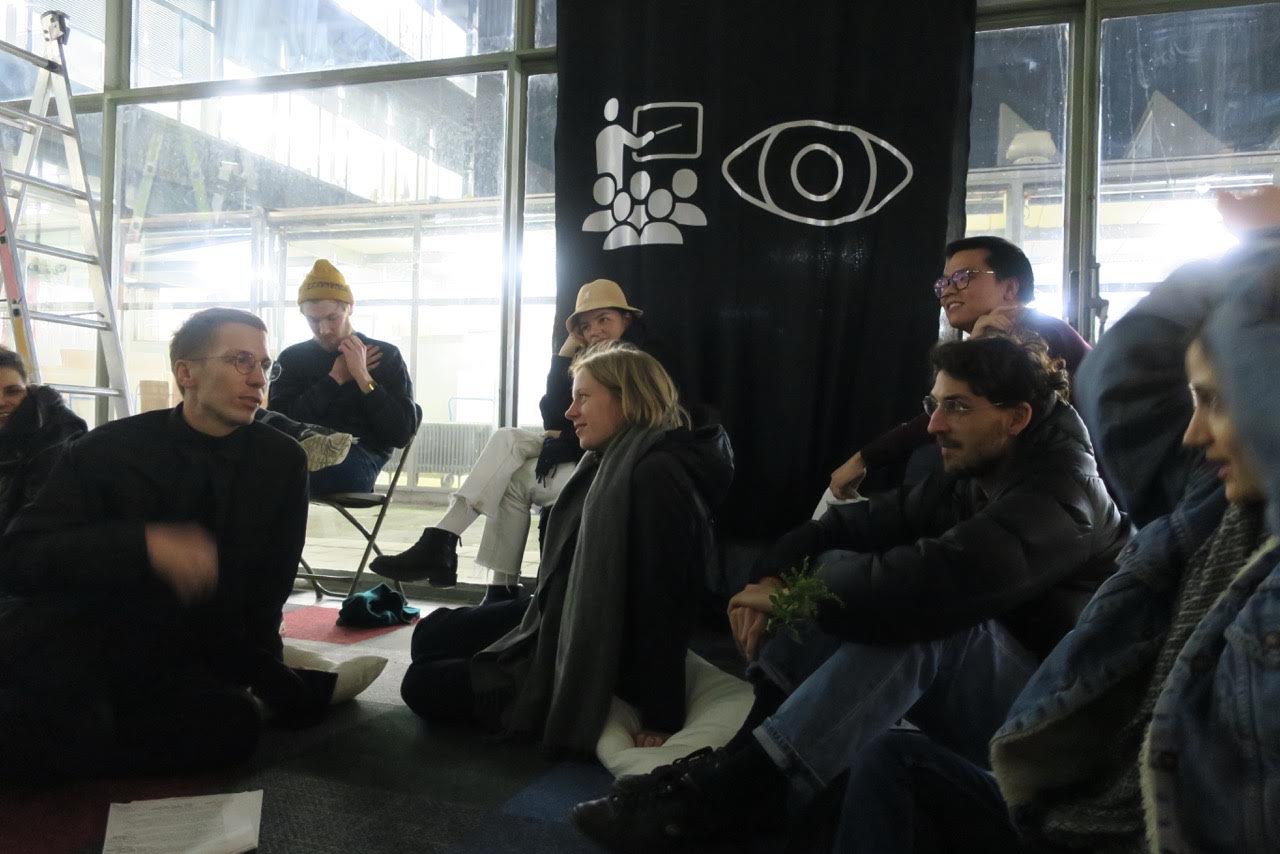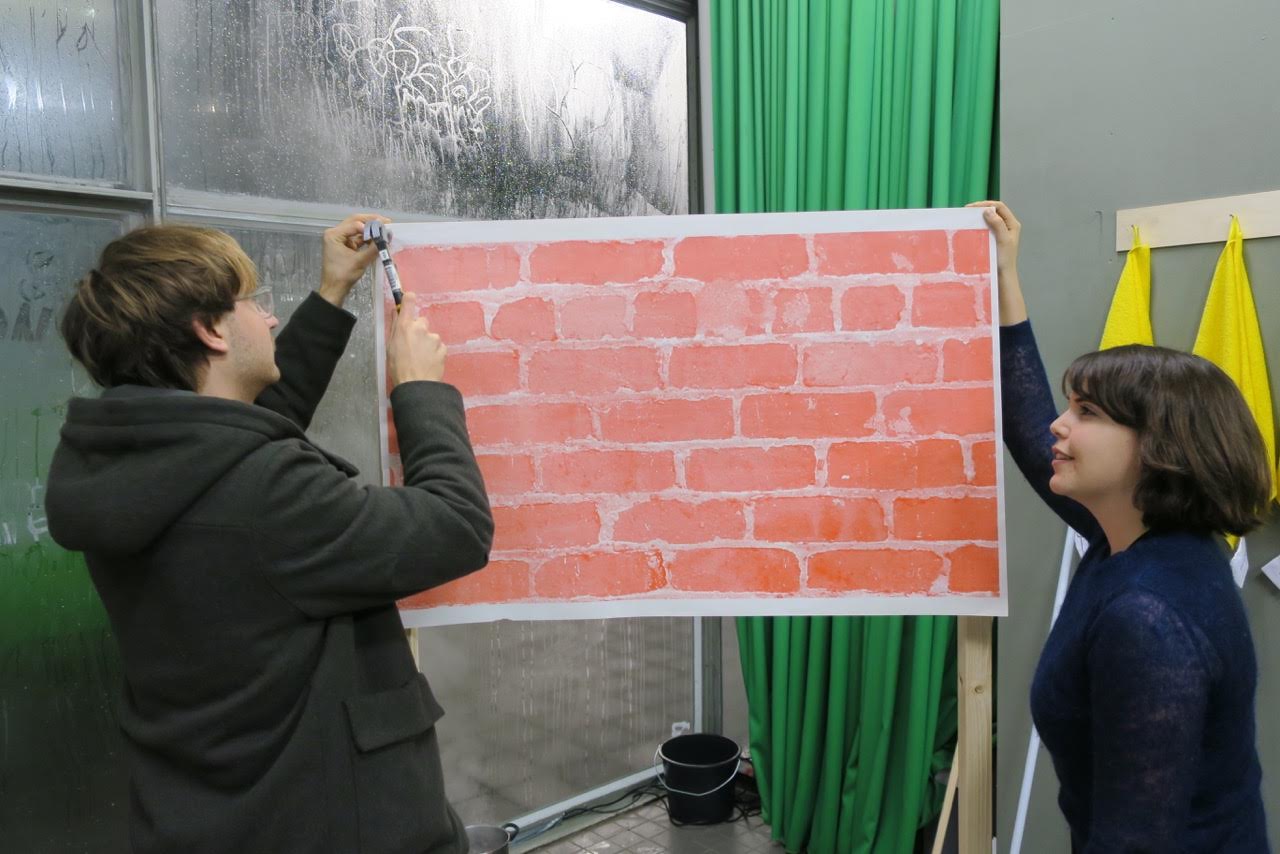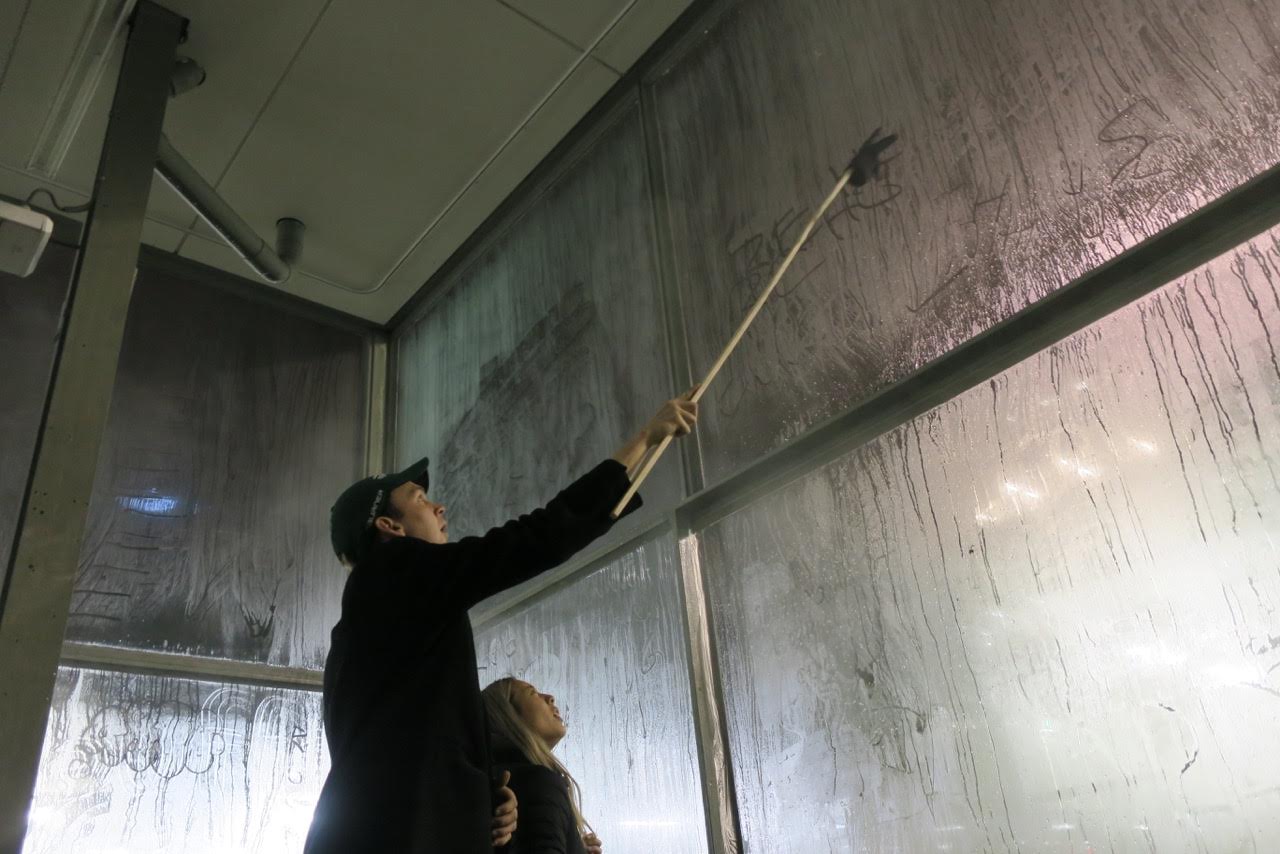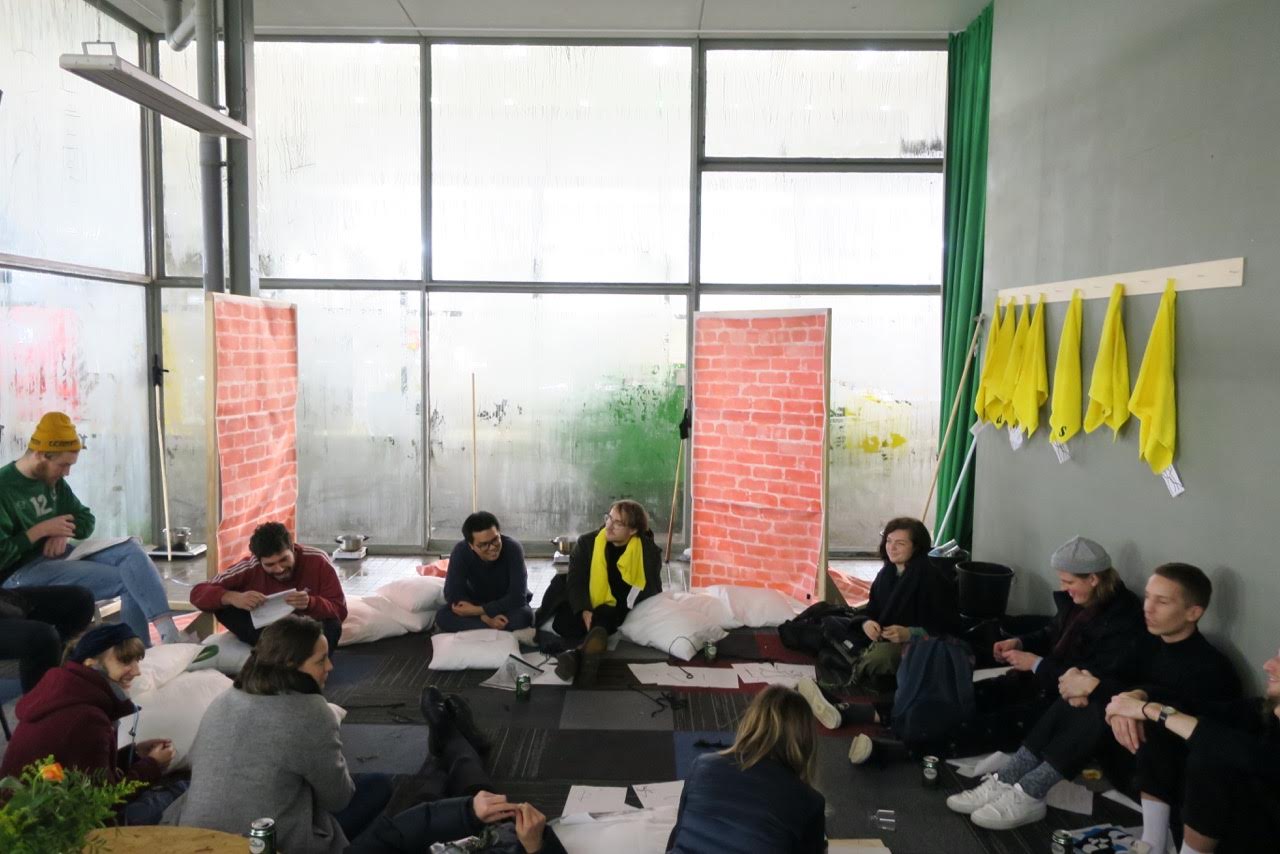The Rietveld Pavilion is a work space in a glass structure situated in front of the Gerrit Rietveld Academie. It is managed by Stefanie Rau (Critical Studies, Sandberg Instituut) and Marie Larsen (VaV, Gerrit Rietveld Academie). Continuing Kristine Nørgaard Andersen’s work in the Pavilion (2015-2016), Stefanie and Marie are now working on the project as a collaborative investigation of site-specific process-based projects. Their interest revolves around the unimagined results of projects that are given time and space to evolve, change and materialise in an open environment. The already existing conditions of the space have been altered and stretched in order to allow experiments, growth and further reflections. With a focus on sharing thoughts and processes they are looking for new ways of thinking about exhibiting within and outside the institution of the academy. Contact: pavilion@rietveldacademie.nl
Graphic design: Sophie Rentien Lando and Alice Dhinaut.Typeface: Mercator by Dick Dooijes and Laurenz Brunner.














